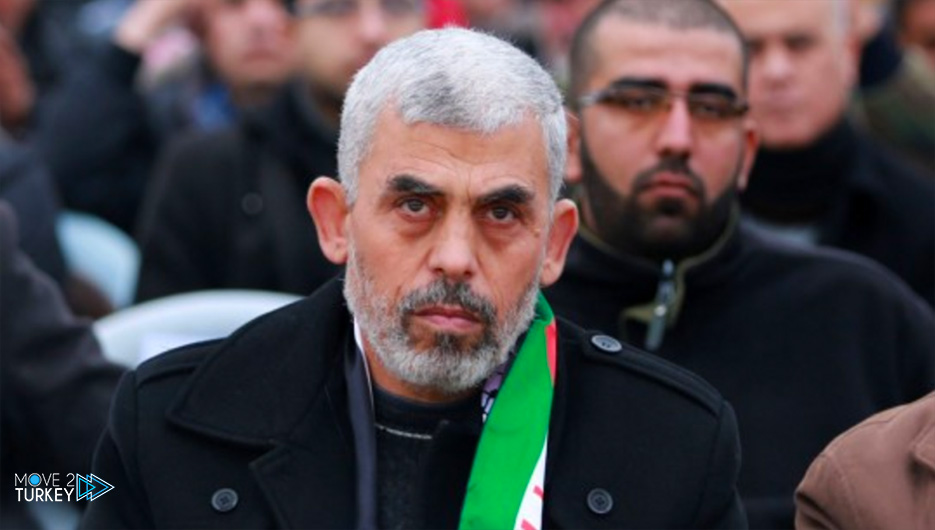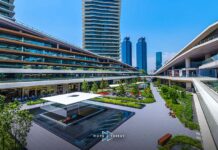
The head of the “Hamas” movement in the Gaza Strip, Yahya al-Sinwar, said on Saturday that his movement would not accept anything less than a “great breakthrough for the humanitarian and economic situation in the Strip.”
This came in statements to Sinwar, during a meeting with academics in Gaza City.
Al-Sinwar continued: “This breakthrough will be felt by the people of Gaza on the humanitarian, life and financial levels.”
He stated that investing “the various aspects of the victory (which the resistance achieved against the occupation in its recent aggression on Gaza last month) will be on two levels, phased and strategic.”
He continued, “We will not put obstacles in the way of the reconstruction of Gaza, and we will not take from the reconstruction funds for the benefit of the resistance, and we will be keen to facilitate reconstruction tasks and revive the economy.”
-Advertisement-
staging level
Al-Sinwar explained that the form of investment at the interim level is represented in the presence of “a very big opportunity to relieve the people of Gaza, reconstruction and reviving economic life.”
According to Sinwar, this level also represents “a real opportunity for the unity of the Palestinian people politically and geographically, ending the state of division and arranging the Palestinian house through the arrangement of the Liberation Organization.”
He stressed that everything that was proposed to rearrange the Palestinian house before the end of the last battle on May 21 is “no longer valid today.”
He said: “Talking about governments and meetings aimed at consuming the stage and burning time is not feasible, and it will not be acceptable to us.”
-Advertisement-
He continued: “The real and immediate national entitlement must be through arranging the Palestinian National Council on correct foundations to include all influential forces and factions.”
Among the interim goals, Sinwar said: “There is a real opportunity to mobilize international public opinion and to explode the popular resistance of the Palestinians in all their locations, in a way that forces the occupation to respect international law.”
He added: “Achieving this goal allows either the establishment of a Palestinian state on the 1967 borders, with Jerusalem as its capital.
Or to put the occupation in a state of conflict with the international administration, isolate it and end its state of integration in the region and the world.”
-Advertisement-
strategic level
As for the strategic goal, Sinwar summed it up as “to continue building the resistance force to form a real spearhead in preparation for the battle of liberation.”
And he added: “We arrange ourselves and our relationship with all arenas, whether with the Palestinians or Arabs and Muslims, specifically the axis of resistance and Jerusalem, to be partners in the battle of liberation.”
Achieved goals
On the other hand, Sinwar explained that the resistance managed during the last battle to achieve a number of strategic goals.
The most prominent of them is “the case of proving to the enemy that the Al-Aqsa Mosque has someone who protects and defends it, and is ready to pay all costs for that.”
And he indicated that the resistance through the battle “thwarted a malicious Zionist project by dividing Al-Aqsa Mosque in time and space.”
-Advertisement-
The battle, according to Sinwar, also embodied “the unity of the Palestinians and the united nation behind the resistance, just as the uprising of the people of the West Bank and the interior (Israel) constituted a pressure factor greater than the missiles.”
He pointed out that the resistance in Gaza used “50 percent of its military capabilities” during the last battle, pointing out that it fired “its old missiles.”
Among these goals, among the Sinwars, is that the resistance thwarted an Israeli plan dubbed “The Winds of the South.”
To assassinate “the leaders of the first row of the movement, surprising the capabilities of the resistance, killing more than 10,000 fighters, and destroying the city of underground tunnels.”
He added, “The occupation achieved zero goals from that plan, while the total destroyed tunnels amounted to about 3 percent.”
-Advertisement-
At the conclusion of his speech, he said that the renewal of the battle “with the occupation will change the shape of the entire Middle East.”
On April 13, the situation in Palestine erupted as a result of Israeli “brutal” attacks in the occupied city of Jerusalem.
The escalation extended to the West Bank and the Arab areas inside Israel, then turned into a military confrontation in Gaza that lasted for 11 days, and ended with a ceasefire at the dawn of last May 21.






























